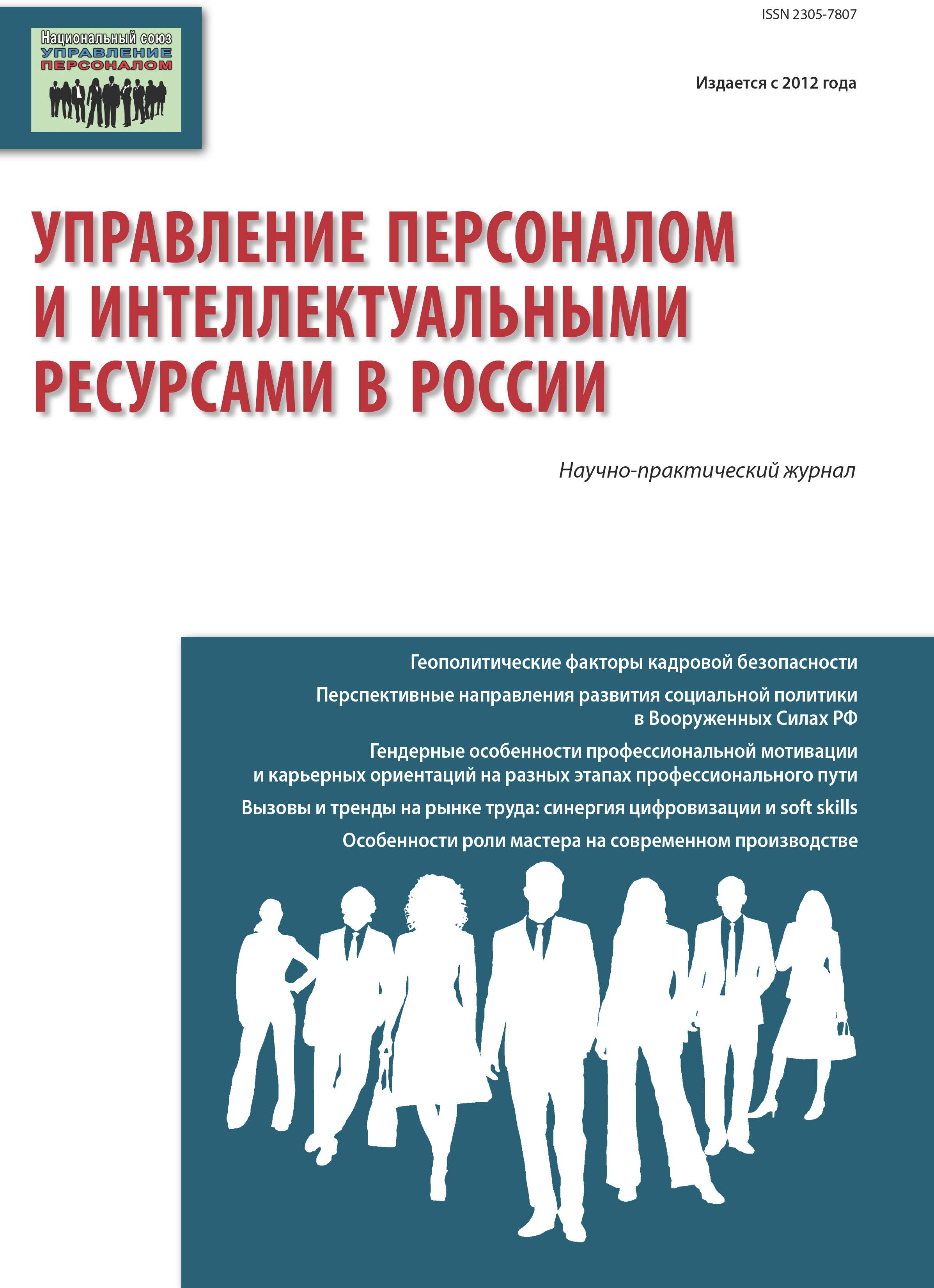The paper takes an effort to review evolution of scientific views on the “labor efficiency” category. Based on the analysis of studies determining the core and essence of this notion, the author specifies three distinctive approaches: productive, effective, and qualitative. Further pros and cons of their implementation under contemporary conditions are evaluated. The author suggests treating labor efficiency as a multifaceted notion embracing the whole summation of productive, economic, social and psychological, environmental and physical relations, which are developed between people in the course of such working practice, which provides high-quality marketable product with minimum labor cost and ensures manufacturers’ income.
labor, evolution, approach, efficiency, productiveness, effectiveness, quality of labor, manpower, work.
RESEARCH RELEVANCE
Against the background of market economy when business activity is always put at risk, all effectiveness increase issues gain primary importance due to the entrepreneurs’ need for the utmost resource saving of production release. Determination of efficiency determines types of products to release, the way of their distribution as well as the volume of resources to be used for the current and future production. It is efficiency that influences the solution of such social problems as increasing living standards of the society, decline in inflation, and improvement of personnel labour and rest conditions.
DEVELOPMENT OF VIEWS ON THE LABOUR EFFICIENCY CATEGORY IN THE NATIONAL SCIENCE
There are many research studies of labour efficiency in contemporary scientific literature, each researcher suggesting their own body of measurement indices that is determined by existing social & economic conditions of public production. Ambiguous interpretation of the labour efficiency category requires explanation of its essence.
All points of view on «labour efficiency» determination are specified in Table 1 for generalization, where we have distinguished five stages of the term transformation.
The first one — « classic» — started its development from establishing efficiency and productive powers by Karl Marx and found further propagation in Soviet Union domestic researchers’ studies [1, 2, 3].
Up to the present day, one can find definition of the core of labour efficiency through its effectiveness. Some consider effectiveness the main measurement of labour efficiency; others consider it the main criterion [5].
Undoubtedly, labour efficiency is one of the most complicated categories in economics.
Academic arguments as to the main point, characteristics, and efficiency of labour have always been in scientists’ focus of attention because key problems of comparison of public production costs and results are touched upon. Discussions regarding cost accounting of not only direct labour, but also the «last» or embodied in things one, laid foundations for the second wave of development of views on labour efficiency. The author of this article believes that productivity of labour is a unity of various, however inseparably associated aspects: the monetary & wealth substance and public mode; separation between direct and embodied labour is very conventional and depends on time and space. If parameters of means of production usage are not taken into account, then relation between labour production index and finance indicator of activity is broken. That is why from a practical standpoint various tasks of labour management and production management require taking into account both direct and embodied types of labour. The third transformation of views is introduction of the term «public labour efficiency» into economics (the term being wider than «labour productivity») and increase in production of excess product can raise labour productivity, but lower its efficiency.
1. Gavrilov R.V. Productivity of Labour: Indices of Planning and Methods of Measurement. Moscow, Ekonomika Publ., 1985.
2. Zanin V.I. Productivity of Labour in Industries (Measurement, Analysis and Planning Topical Issues). Novosibirsk, Nauka Publ., 1977.
3. Karpukhin D.N. Social Labour Productivity and Macroeconomic Proportions. Moscow, Mysl’ Publ., 1972.
4. Sklyarenko V.K., Prudnikov V.M. Business Economics: course book. Moscow, INFRA-M Publ., 2008.
5. Lubkov A.N., Suleymanova A.G. Productivity of Agricultural Labour - Most Important Criterion of its Efficiency. Economics of Agricultural Enterprises and Reprocessors. 2007. No. 11.
6. Genkin B.M. Labour Economics and Sociology of Labour: course book for universities. 7th enlarged edition, Moscow, Norma Publ., 2007.
7. Belokopytov A.V. Effective Use of Agricultural Labour under Agrarian Market Formation (theory, methodology, practice): Doctor of Economics dissertation. Moscow, 2005.
8. Tang J., Wang W. Sources of aggregate labour productivity growth in Canada and the United States. Canadian Journal of Economics. Revue Canadienne D’Économique. Vol. 37. Issue 2. May 2004, pp. 421-444.
9. Beveren I. Total Factor Productivity Estimation: Practical Review. Journal of Economic Surveys. Vol. 26, Issue 1, pp. 98-128. February 2012.
10. Simonova M.V. Strategy and Means of Manpower Quality Management at Building Industry Enterprise. M.V. Simonova. Moscow, Kreativnaya Ekonomika Publ., 2008.
11. Knyazkova B.S. Limits of Use of «Performance», «Effect» and «Effectiveness’ Notions in Management Accounting. Urgent Issues of Economics and Management: international academic conference proceedings (Moscow, April, 2011). Vol. 2. Moscow, PRIOR Publ., 2011, pp. 103-106.
12. Grechnikova S.V., Ermakov G.P. How Can One Evaluate Workforce Efficiency at Enterprise? Perfecting System of Economic Labour Efficiency Evaluation under Transition Economy. Rossiyskoе Predprinimatelstvo. 2011. No 1, Issue 1, pp. 38-42.






